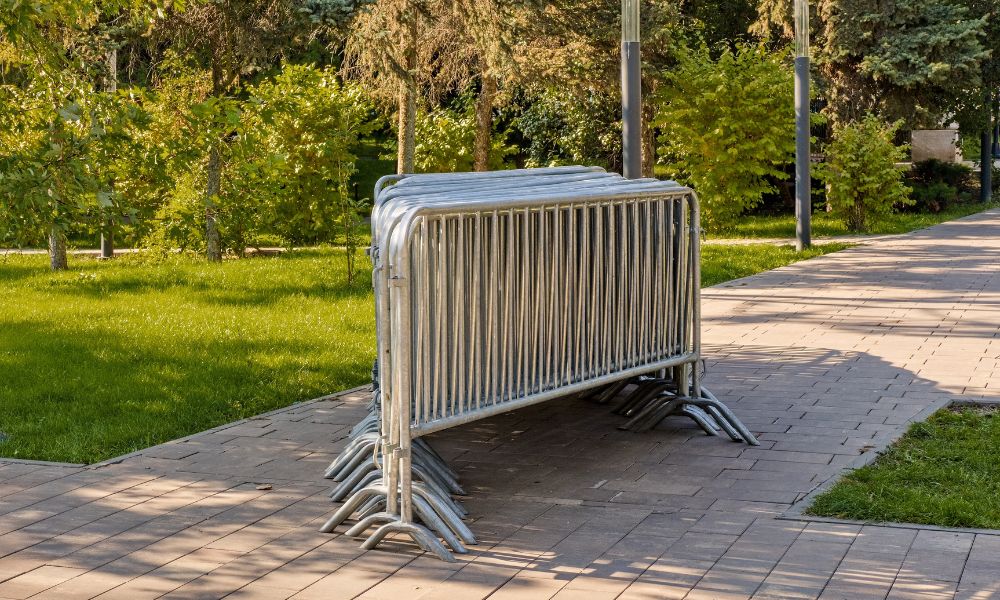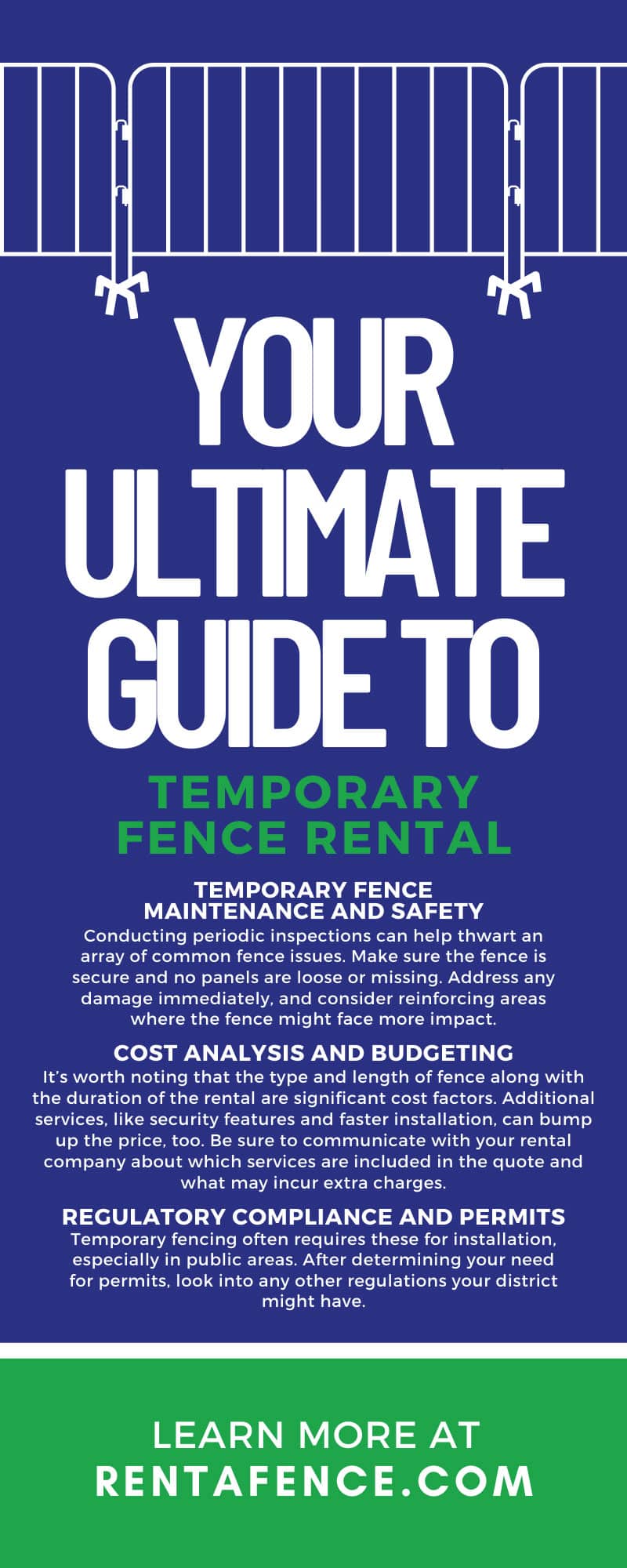When the need for a solid yet movable barrier arises, the unassuming but highly practical temporary fence becomes a steadfast ally. In the realm of construction, the comings and goings of heavy machinery call for managed spaces. For outdoor events or emergencies, cordoning off areas becomes a matter of public safety.
In all these instances and many more, temporary fencing steps in as a versatile solution. Whether you’re about to set out for your first big construction project or need to fence off your block party, the temporary fence landscape awaits with all of its intricacies. Explore this ultimate guide to temporary fence rental to learn more.
Understanding Temporary Fencing
Temporary fencing serves as a crucial demarcation solution for short-term requirements. Unlike permanent fences, they are installed with the intent to be efficient, cost-effective, and easily movable. There are many reasons one might require these temporary structures, from seasonal needs to short-lived events. The installation of temporary fencing isn’t just about blocking an area; it’s also about versatility. A well-chosen fence can ensure controlled access, enhanced security, improved crowd control, and more.
That’s why it’s important to know your options. Clients can select from various models, each catering to distinct needs. Chain link fences, the quintessential choice, offer a seamless balance of visibility and security. Panel fences are robust and formidable barriers. Mesh fences, with their solid foundation and wind-permeable structure, suit adverse weather conditions. The choice isn’t just a matter of personal preference but about ensuring that the fence serves its specific purpose without a hitch.
When selecting a temporary fence, it’s important to consider what you need your fence to do. Durability, ease of installation, and the fence’s ability to withstand various external pressures are vital considerations. For a marathon, a mesh fence would be light and mobile, whereas for a construction site, robust panel fences would be a more prudent option.
Temporary Fencing Applications
Temporary fences are like chameleons—they adapt to the needs of the environment. For example, construction zones are breeding grounds for risky situations, making temporary fences crucial for keeping non-essential personnel away from such hazards. These structures play a pivotal role in adhering to safety norms and preventing accidents that can range from minor inconveniences to full-scale disasters.
On the other side of things, we have community events. During these festivities, you might have to manage the flow of foot traffic while also ensuring that vehicles stay out of the way. In these instances, temporary fences are pulling double duty. They create zones for pedestrians and keep vehicles at bay, all while being unobtrusive enough to optimize the overall ambience of the event.
Of course, the potential applications of these fences extend far beyond jobsites and local events. Temporary fence rental services are available to anyone who needs moveable fences for a specific amount of time.
Temporary Fence Rental Process
This ultimate guide to temporary fence rental wouldn’t be complete without explaining the fence rental process. Renting one of these fences is a bit more nuanced than simply picking one out and setting it where needed. From the initial consultation with the rental company to the tear-down at the end of your event or project, each part of the process matters.
The first step in your temporary fence acquisition is choosing a reliable fence rental partner. Look for fence rental companies with stellar customer reviews, clear communication, and a solid track record in delivery and setup. Transparency in terms of pricing and understandable contracts are also key indicators of a good rental company.
The consultation and siting stages involve having a detailed discussion with the rental company about your needs. Communicate your objectives clearly, whether it’s to secure a site or guide a large crowd through an event. The rental company will need information about the location, ground surface, and any potential challenges to ensure a smooth setup.
Once all of the details are ironed out, it’s time for deployment. The delivery team will arrive with the necessary equipment and set up the fence according to the agreed-upon design. Efficient installation is critical, as it should not impede the flow of work for construction projects or the entertainment value during events. Once your rental time has come to an end, the same team will deconstruct the fences and take them away.
Temporary Fence Maintenance and Safety
A properly maintained fence is a reliable fence. Neglecting fence maintenance, even for temporary structures, can lead to unexpected failures, which is the last thing you want on a construction site or during a busy event.
Conducting periodic inspections can help thwart an array of common fence issues. Make sure the fence is secure and no panels are loose or missing. Address any damage immediately, and consider reinforcing areas where the fence might face more impact.
In addition, you need to make sure that safety is always the top priority. Ensure all temporary fencing is erected and maintained in compliance with applicable health and safety regulations. Clear signage and familiarity with the fence’s location are crucial to prevent accidents and maintain smooth operations.
Cost Analysis and Budgeting
Temporary fencing isn’t one-size-fits-all when it comes to pricing. Therefore, it’s important to understand the various factors that can contribute to the overall costs in order for you to manage your budget effectively.
First, it’s worth noting that the type and length of fence along with the duration of the rental are significant cost factors. Additional services, like security features and faster installation, can bump up the price, too. Be sure to communicate with your rental company about which services are included in the quote and what may incur extra charges.
Also, make sure you plan ahead. A solid financial strategy can be your best friend when it comes to temporary fencing. Assess the duration of your project or event and adjust it to the minimum required amount of time to make sure it fits your budget. And be sure to consider bundling services for maximum cost efficiency while taking advantage of off-peak rental periods, if your event permits flexibility.
Regulatory Compliance and Permits
Finally, you must consider the legal implications. While it’s easy to get tangled up in the red tape, understanding local regulations and obtaining the necessary permits is crucial to avoid any unexpected complications. It’s always best to start the rental process by looking into necessary permits. Temporary fencing often requires these for installation, especially in public areas. After determining your need for permits, look into any other regulations your district might have. If you start this process well in advance of your event or project, it’ll help ensure smoother operations.
Before you sign on the dotted line, make sure you understand all of the jargon found within local regulations and permit applications. If in doubt, consult a professional who is well-versed in the legal requirements of temporary fencing. It might add an extra step, but it will save you from headaches and potential fines down the line.



Recent Comments